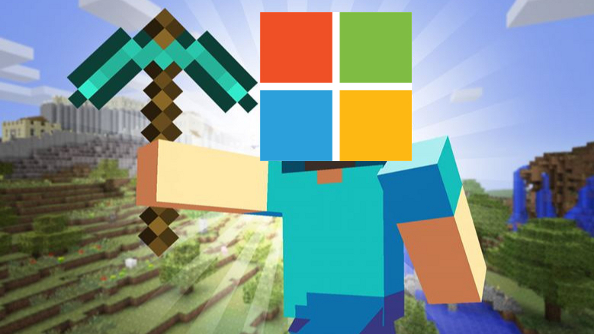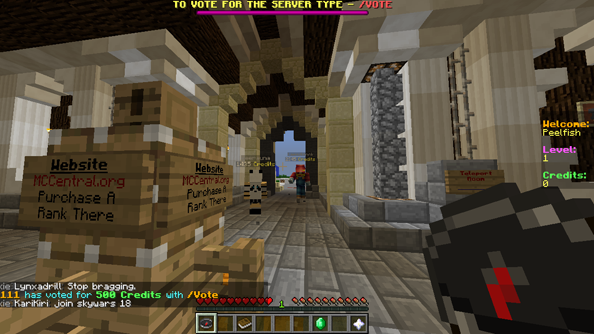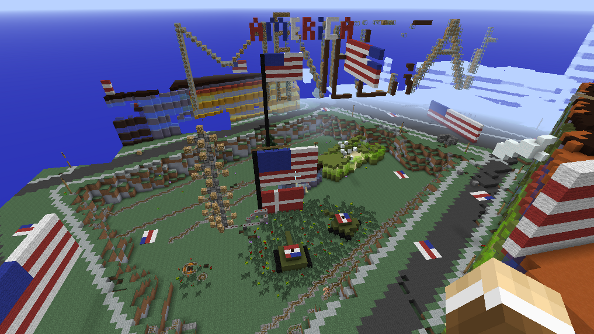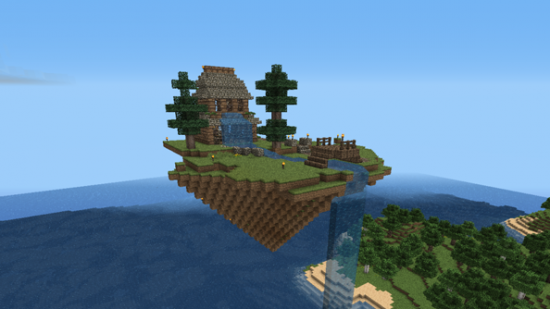Since its launch in 2009 there hasn’t been a ‘small’ year for Minecraft. But 2014 draws a sharp spike on the activity graphs thanks to its enormity. This year was massive for Mojang and Minecraft: a year of genuine breakthroughs in the public consciousness, a year of protecting players from exploitative servers, and a year of still selling by the millions.
Oh, and the year that Microsoft bought Minecraft for $2.5 billion.

The Microsoft deal has been a huge change for Mojang. They always felt like a company with such phenomenal growth that a buyout was inevitable, but Microsoft still managed to take us by surprise. The $2.5 billion was handed over in cash, and suddenly one of software’s biggest giants owned one of the largest games on the planet; a game that this year sold its 17 millionth unit. We had our reservations about the deal – afterall, Microsoft are the company that were supposedly looking after studios like Ensemble and FASA when they collapsed – but so far Minecraft has remained wonderfully in-tact. Microsoft have even spoken out about keeping the spirit of the game going, batting away the idea of a sequel since that wouldn’t best serve the community.
The buyout has seen massive changes at Mojang though. As Microsoft stepped in, Markus ‘Notch’ Persson and the other founding fathers of Minecraft left the building. It was clear that during the breakneck acceleration from launch to worldwide phenomenon Notch had struggled with the pressures of fame and expectation. In a year when he’d been harassed for decisions he’d made over the game’s EULA and other indie developers were taking more and more abuse online, it appeared Notch had had his fill of game stardom. “It’s not about the money. It’s about my sanity,” he explained when detailing the reasons for selling his monolithic creation. And who can blame him? He’s now worth a massive fortune, and free to work on the smaller projects he has true passion for. It’s inevitable that we’ll see his name in the credits of another game in the future.

The EULA decision that caused him so much grief was a major chapter in Notch’s final days. Early in 2014 Mojang outlined plans to change the rulebook for Minecraft users in order to prevent server owners exploiting players. The community had become rife with microtransactions – something illegal under the EULA – with server owners charging players to enter, play various modes, and even buy better weapons. With many of the players at the mercy of these microtransactions being children, it’s no wonder Mojang felt a responsibility to change things.
The updated EULA allows server owners to charge for entry – these users do need to make a living and pay their staff after all – but bans any other kind of payments to try and eradicate ‘pay-to-win’ cultures. Server owners were understandably upset, but many were running exploitative servers that needed to be reigned in and made safe. Mojang made the right call, and whilst Notch was on the receiving end of some heavy criticism, the newly implemented rules have made Minecraft a safer, fairer place.

And being a safe and fair place is something Minecraft really needs to be, especially as it continues to grow in the public consciousness. 2014 has been an incredible year to witness Minecraft seep into organisations that previously wouldn’t have touched PC games. This year Brisbane City Council commissioned a Minecraft build of their city to try and get kids interested in geography. Similarly an Ordnance Survey intern turned the organisation’s many maps of Great Britain into a colossal Minecraft map detailing every hill, field, and river of good ol’ Blighty. An incredible feat, but nothing compared to Denmark’s national Minecraft project that saw the entire country recreated, and subsequently blown up by blocky American terrorists.
Even Britain’s most traditional establishments were onboard the Minecraft train in 2014. The British Museum recruited an army of pro-builders to help create a digital version of their hallowed halls and exhibits. The Tate went one step further though, inviting digital tourists to step through the frames of their most famous exhibits into the worlds within paintings with their Tate Worlds maps. When the paintings of such greats as Christopher Nevinson have been commissioned as map builds, you know Minecraft has become so much more than that quirky virtual LEGO set. Although if that wasn’t proof enough for you, Minecraft was the star of a Simpsons couch gag in 2014 too. A blocky Springfield was the symbol that Minecraft had finally achieved cultural immortality.
